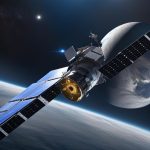NASA has recently announced updates to its highly anticipated Artemis campaign, which will adjust the schedules for Artemis II and Artemis III. The first crewed Artemis mission, Artemis II, was initially planned for an earlier date but has now been targeted for September 2025. Similarly, Artemis III, which will mark the historic landing of astronauts near the lunar South Pole, is now projected for September 2026.
These schedule changes are being made with the primary concern of ensuring the safety of the crew and the overall success of the missions. NASA recognizes the importance of allowing ample time for teams to address and overcome challenges associated with the first-time development, operations, and integration of spacecraft and systems.
The revised launch timeline will give the development teams additional time for thorough testing, fine-tuning, and refinements, reducing the risks and enhancing the chances of mission success. NASA aims to achieve the highest level of reliability and readiness before sending astronauts on these groundbreaking lunar missions.
- The first crewed Artemis mission, Artemis II, is now targeted for September 2025.
- Artemis III, with its historic lunar landing, is planned for September 2026.
- The adjusted schedule allows for thorough testing and refinement.
- Ensuring the safety of the crew is a key priority for NASA.
- Additional time will be devoted to addressing development challenges and system integration.
Key Takeaways:
- NASA has announced a delay in the first crewed Artemis mission, targeting September 2025.
- The revised timeline prioritizes crew safety and mission success.
- Artemis II will test critical environmental control and life support systems.
- Challenges with battery issues and circuitry components are being addressed.
- The Artemis mission aims to explore the Moon extensively, gather valuable data, and prepare for future deep space exploration.
Reason for the Delay and Safety Concerns
The main reason for the delay in the Artemis missions is to ensure crew safety. NASA’s testing to qualify components and systems necessary for astronaut safety and mission success has revealed issues that require additional time to resolve.
The Artemis II mission, as the first crewed flight with astronauts aboard the Orion spacecraft, will test critical environmental control and life support systems. Teams are currently troubleshooting a battery issue and addressing challenges with a circuitry component responsible for air ventilation and temperature control.
Additionally, NASA is investigating the unexpected loss of char layer pieces from the spacecraft’s heat shield during the Artemis I mission. These investigations, along with the development challenges experienced by NASA’s industry partners, have led to the revised timeline for Artemis II and III.
| Reasons for Delay | Safety Concerns |
|---|---|
| Necessary testing and qualification of components and systems | Ensuring astronaut safety |
| Troubleshooting battery issue | Critical environmental control and life support systems |
| Addressing challenges with circuitry component | Air ventilation and temperature control |
| Investigating loss of char layer pieces | Spacecraft heat shield |
| Development challenges faced by industry partners |
Importance of Artemis Mission and Future Exploration
The Artemis mission is a long-term exploration campaign that aims to conduct scientific research on the Moon and prepare for future human missions to Mars. With Artemis, NASA will explore more of the Moon than ever before, learn how to live and work away from Earth, and gather valuable data for future deep space exploration.
Through the Artemis mission, NASA seeks to achieve significant milestones that will pave the way for human spaceflight beyond low-Earth orbit. These milestones include establishing a sustainable human presence on the Moon, landing the first woman and the next man on the lunar surface, and demonstrating the technologies and systems necessary for future lunar missions.
Unlocking Lunar Potential
- Artemis mission aims to study the Moon’s geology, composition, and resources to better understand the formation and evolution of our solar system.
- NASA’s commercial and international partnerships play a crucial role in enabling Artemis mission’s success by providing innovative technologies and capabilities.
- Exploring the Moon will also lay the foundation for future missions to Mars, as the Moon serves as a testbed for deep space technologies and exploration strategies.
Learning from Each Mission
Each Artemis mission builds upon the lessons learned from its predecessors, ensuring continuous improvement in operational procedures and technologies. The adjusted timeline allows for the resolution of challenges associated with first-time capabilities and operations, guaranteeing the safety and achievement of future Moon missions.
Artemis Mission Timeline
- Artemis I: an uncrewed test flight around the Moon scheduled for November 2021.
- Artemis II: the first crewed Artemis mission, targeted for September 2025.
- Artemis III: planned for September 2026, this mission will land the first astronauts near the lunar South Pole, expanding our understanding of the Moon’s resources and potential for sustained exploration.
The Artemis mission marks a significant milestone in NASA’s journey to explore the Moon and beyond. By leveraging cutting-edge technologies, international partnerships, and the dedication of the Artemis team, NASA is advancing humanity’s understanding of our solar system and paving the way for future space exploration.
Conclusion
The NASA Artemis project showcases the agency’s unwavering commitment to exploring the Moon through groundbreaking methods. By adjusting the schedules of the Artemis II and III missions, NASA places the safety of the crew at the forefront, ensuring the success of these momentous lunar expeditions. The additional time allocated to the project will allow for the resolution of technical challenges and the fine-tuning of systems and components.
The Artemis mission serves as a vital component of a comprehensive long-term exploration campaign. Its primary objectives include conducting scientific research on the Moon, making preparations for future human missions to Mars, and establishing a sustainable human presence in space. NASA’s innovative Artemis project pushes the boundaries of human exploration, paving the way for new discoveries and advancements in space travel.
Through strategic partnerships and continuous learning from each mission, NASA strives to develop an enduring presence on the Moon. The adjusted timeline allows for the thorough addressing of first-time capabilities and operational challenges, ensuring the safety and success of future lunar endeavors. As NASA pushes forward with the Artemis project, it exemplifies the agency’s determination to explore the Moon and beyond, fostering scientific progress and human curiosity.
FAQ
What is the new launch date for the first crewed Artemis mission?
The first crewed Artemis mission, Artemis II, is now targeted for September 2025.
When is Artemis III, the mission that will land the first astronauts near the lunar South Pole, planned for?
Artemis III is planned for September 2026.
What is the main reason for the delay in the Artemis missions?
The main reason for the delay is to ensure crew safety and resolve technical issues.
What are the challenges associated with first-time developments, operations, and integration?
The challenges include testing critical environmental control and life support systems on the Artemis II mission, troubleshooting battery and circuitry issues, and investigating the loss of char layer pieces from the spacecraft’s heat shield during the Artemis I mission.
What is the goal of the Artemis mission?
The goal of the Artemis mission is to conduct scientific research on the Moon, prepare for future human missions to Mars, and establish sustained human presence in space.
What is NASA’s approach to the Artemis mission?
NASA is prioritizing commercial and international partnerships, incorporating lessons learned from each mission into the next, and ensuring the safety and success of future Moon missions.
What does the NASA Artemis project represent?
The NASA Artemis project represents the agency’s dedication to exploring the Moon in new and innovative ways, pushing the boundaries of human exploration, and paving the way for future discoveries and advancements in space travel.












